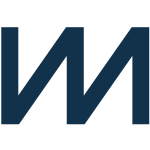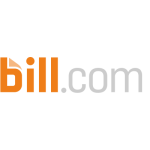About ChartMogul
ChartMogul can turn new and existing business intelligence data into valuable analytics that companies can use to improve their market performance. ChartMogul can take subscriber data - both created within ChartMogul and imported from other data sources - and generate visualized analytics for a variety of metrics that SaaS companies care about.
About Bill.com
Bill.com is an automated accounts receivable solution that allows you to send recurring invoices to your customers, deliver automatic overdue notices, track the status of invoice payments, and accept flat-rate ACH payments. The platform integrates seamlessly with other business solutions like Sage Intacct, Quickbooks, Zero, and NetSuite to streamline data entry tasks, boost accounting accuracy, and achieve more efficient account reconciliations.
Popular Use Cases
Bring all your ChartMogul data to Amazon Redshift
Load your ChartMogul data to Google BigQuery
ETL all your ChartMogul data to Snowflake
Move your ChartMogul data to MySQL
Bring all your Bill.com data to Amazon Redshift
Load your Bill.com data to Google BigQuery
ETL all your Bill.com data to Snowflake
Move your Bill.com data to MySQL
ChartMogul's End Points
ChartMogul Plans
Gather data about your subscription plans - like the subscription IDs, names, billing intervals, and the number of intervals that are charged at once - to evaluate the performance of each plan. This will help you better understand the effectiveness of your plans so that you can determine which ones are more or less successful as a whole.
ChartMogul Customers
Create, retrieve, or update data for new or imported customers in ChartMogul. This allows you to see important customer contact details, customer IDs, and valuable performance data including a customer’s MRR, ARR, and industry sector. You can then use that data to better segment your customers, which can provide more accurate and specific information about your business performance.
ChartMogul Invoices
Import invoice data for customers that you are tracking through ChartMogul, including customer IDs, dates of purchase, transactions, and any relevant line items. Then, use ChartMogul to create subscription data for those customers and use that data to track more specific revenue data, both in ChartMogul and in your other data sources.
ChartMogul Transactions
Track payments or refunds made on an invoice to see the transaction ID, type of transaction, transaction date, and whether or not the transaction was successful. This can help you get more accurate analytics from your invoice data. It can also indicate when there is an unusually high number of refunds, which could signal a problem worth addressing.
ChartMogul Subscriptions
Get a list of subscriptions that ChartMogul has automatically generated from invoice data. This endpoint returns several IDs - including subscription IDs, customer IDs, plan IDs, and data source IDs - that will help you to more easily track and integrate data between any of those parameters to create deeper, more accurate business analytics.
ChartMogul Tags
Use tags to track terms that are associated with a customer so that you can segment or monitor them more specifically. For example, you could tag a particular customer as “high priority,” “returning” or anything else that is relevant to your business, and then retrieve a list of customers who have been tagged with those attributes in order to analyze them as a segment.
ChartMogul Custom Attributes
Update customer data with ChartMogul custom attributes that are more specific to the needs of your company. This can include both tags as well as more complex custom attributes. Then, track those attributes in ChartMogul to get analytics that are focused on your particular business concerns.
Bill.com's End Points
Bill.com Payment Methods
Bill.com allows you to bill and process payments through the most popular methods. The platform supports ACH (Automated Clearing House), which is an electronic payments network that's particularly useful for processing large volumes of payments, particularly B2B payments. It also supports payments from credit cards, debit cards, PayPal, wire transfer, and old-fashioned paper checks so vendors can choose the payment method they prefer.
Bill.com Invoice Management and Invoice Generation
Bill.com's invoice management features allow you to capture invoices through automatic scanning and other import methods. By automatically scanning and coding invoices, matching invoices with purchase orders in Quickbooks is a snap. The platform also provides an online portal through which your suppliers can submit invoices, and allows for the delivery of a repository of AP documents, like POs and invoices. In addition, Bill.com includes a host of customizable invoice templates, tools to preschedule the automatic generation and sending of invoices, and technology that convert your invoices into different formats like PDF.
Bill.com Remote Mobile Access
Access to Bill.com is available remotely from an iPad, laptop, or smartphone with an internet connection. This eliminates the need to carry physical checks or invoices on the go, and it allows you to pay bills from anywhere with the Bill.com app. Finally, Bill.com gives you the ability to create reminders and alerts at specific intervals regarding bills that need your approval.
Bill.com Quickbook Synchronization
With Bill.com's Quickbook synchronization features, you won't have as many data entry tasks and you'll reduce the chances of human error in bookkeeping. Any invoice payments in the Bill.com system will reconcile automatically with your Quickbooks records.
Bill.com Analytics Features
Bill.com offers a variety of analytics features to provide statistics and metrics on your billing and invoices. The platform tracks your invoices according to the due date to identify any overdue payments. You can also keep track of KPIs like erroneous payments and time to process invoices. Bill.com analytics features let you monitor cashflow by looking at incoming and outgoing cash figures.








